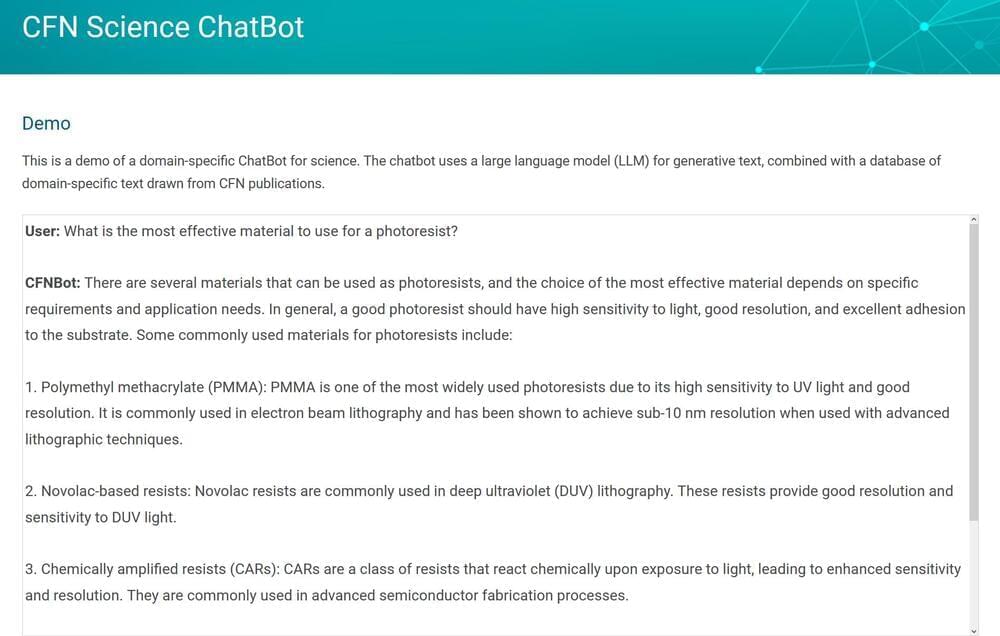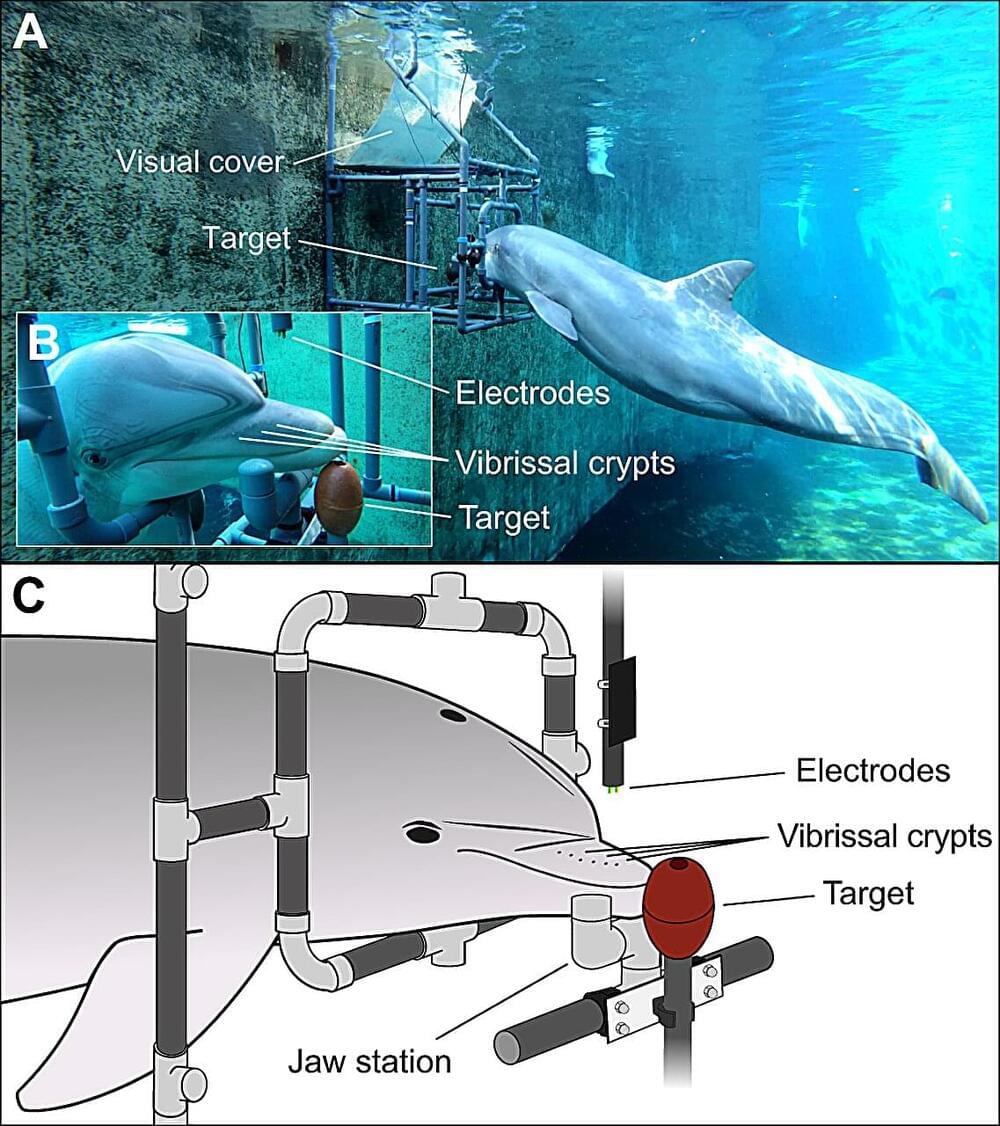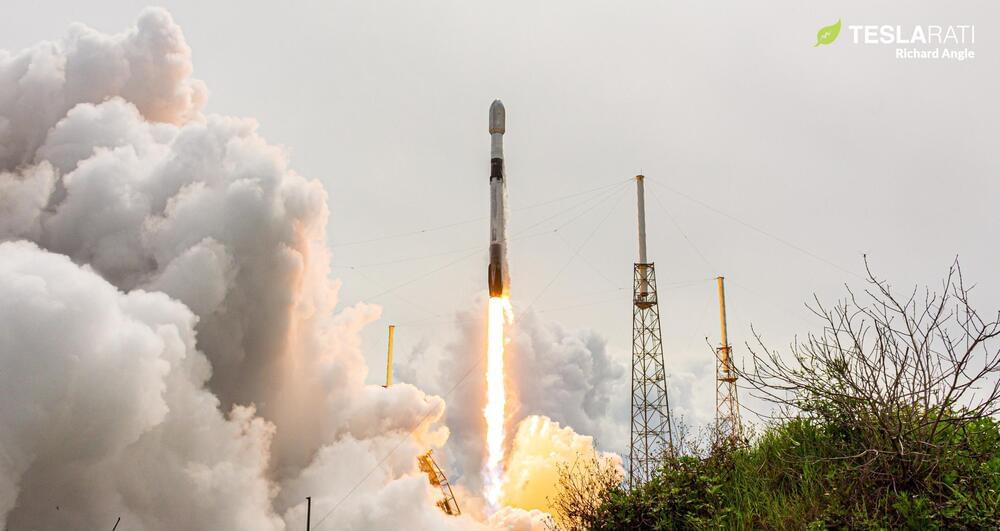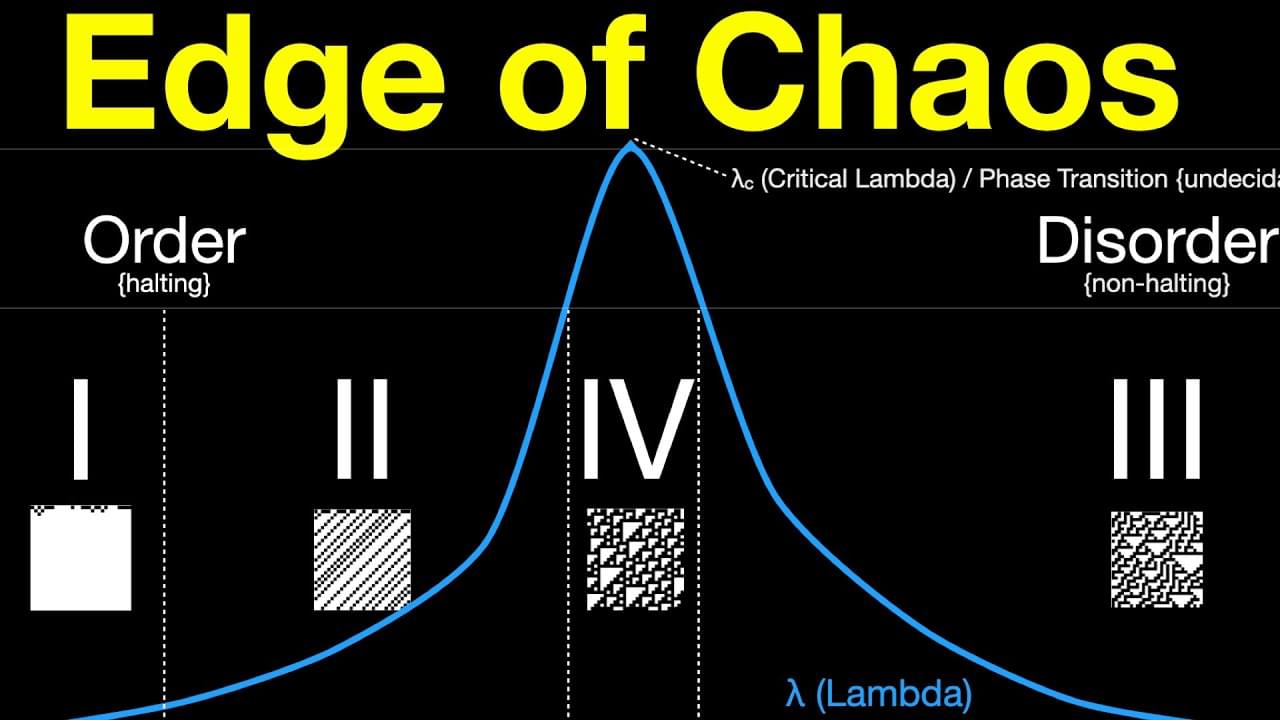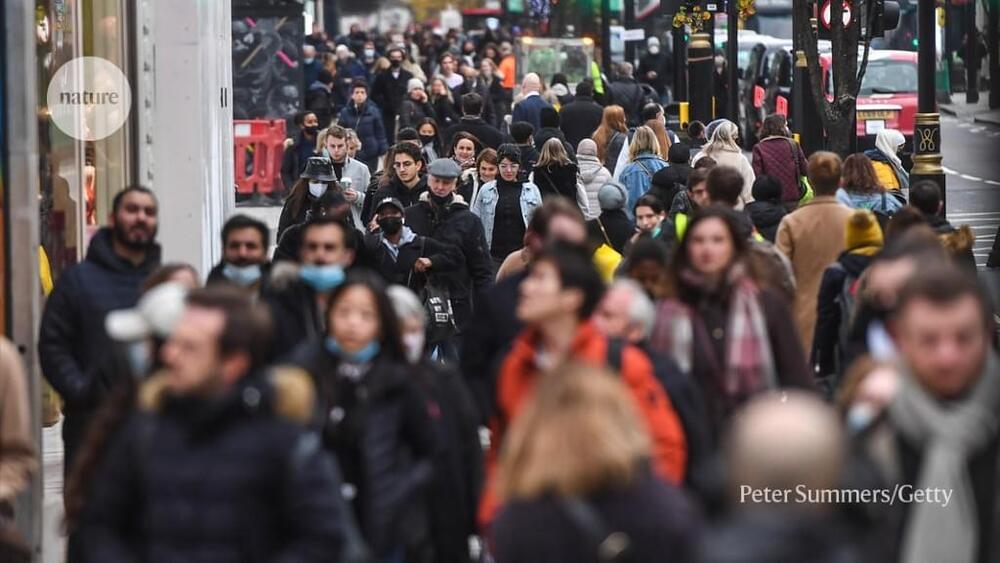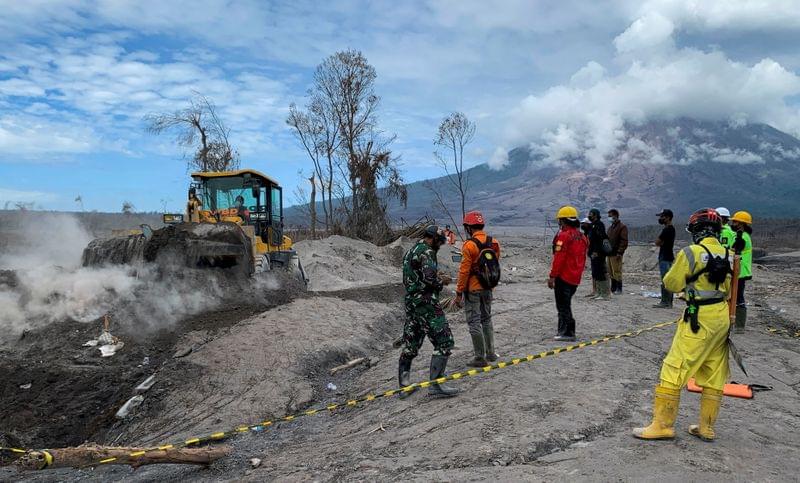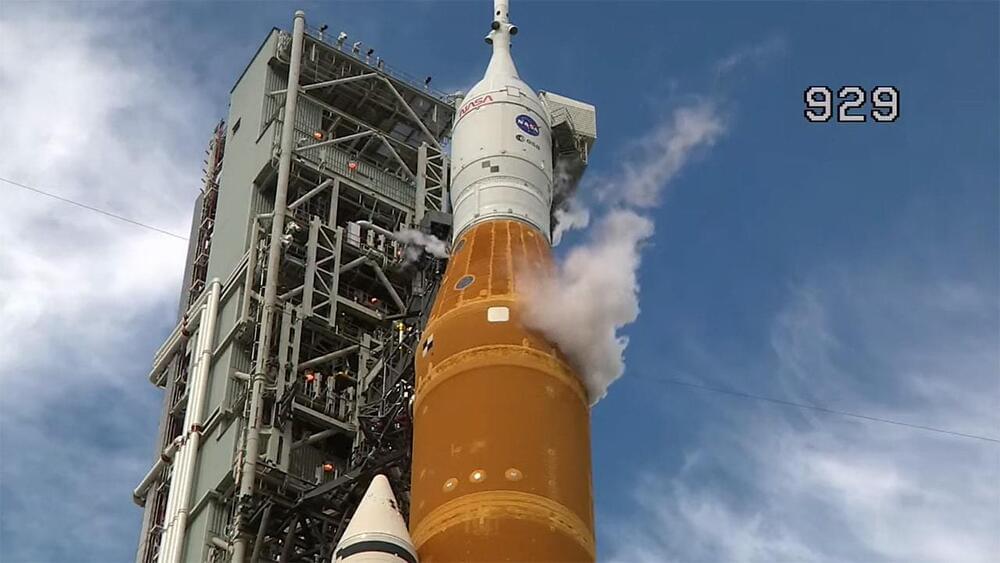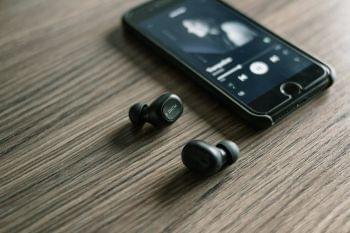Humans already work alongside robots in industries such as manufacturing. Now, for knowledge workers, the threat of AI replacement is coming faster than they imagined.
A researcher has just finished writing a scientific paper. She knows her work could benefit from another perspective. Did she overlook something? Or perhaps there’s an application of her research she hadn’t thought of. A second set of eyes would be great, but even the friendliest of collaborators might not be able to spare the time to read all the required background publications to catch up.
Kevin Yager—leader of the electronic nanomaterials group at the Center for Functional Nanomaterials (CFN), a U.S. Department of Energy (DOE) Office of Science User Facility at DOE’s Brookhaven National Laboratory—has imagined how recent advances in artificial intelligence (AI) and machine learning (ML) could aid scientific brainstorming and ideation. To accomplish this, he has developed a chatbot with knowledge in the kinds of science he’s been engaged in.
Rapid advances in AI and ML have given way to programs that can generate creative text and useful software code. These general-purpose chatbots have recently captured the public imagination. Existing chatbots—based on large, diverse language models—lack detailed knowledge of scientific sub-domains. By leveraging a document-retrieval method, Yager’s bot is knowledgeable in areas of nanomaterial science that other bots are not.
A small team of bio-scientists from the University of Rostock’s Institute for Biosciences and Nuremberg Zoo’s Behavioral Ecology and Conservation Lab, both in Germany, has found evidence that bottlenose dolphins can sense electric fields. In their study, reported in the Journal of Experimental Biology, the group tested the ability of two captive bottlenose dolphins to sense a small electric field.
Many creatures in the animal kingdom are able to sense an electric field—some sharks and the platypus, for example—but only one type of marine mammal has been found to have the ability: the Guiana dolphin. In this new effort, the research team wondered if other types of dolphins have the ability.
They chose to study bottlenose dolphins for two reasons: a pair of were available for testing at the nearby Nuremberg Zoo, and prior research suggested that neural cells in the vibrissal crypts situated along the dolphins’ snouts strongly resembled the electric-field detectors observed in sharks.
Amazon announced today they have bought 3 Falcon 9 launches to deliver their Project Kuiper internet satellites to low Earth orbit in mid-2025.
This wouldn’t be the first time SpaceX has launched a competitor satellite as they have now launched 4 times for one of their other competitors, OneWeb, with a total of 136 satellites delivered to orbit.
Amazon recently made the decision to move up the launch of their first Project Kuiper satellites from United Launch Alliance’s Vulcan rocket which has faced numerous delays to an Atlas V that launched on October 6th.
The hack, which provided unauthorized access to ‘files containing profile information about other users’ ancestry,’ impacted 0.1% of 23andMe’s users worldwide.
Order vs Disorder, Jordan Peterson’s Yin Yang analogy, & Stephen Wolfram’s 4 classes of cellular automata are explored. The edge of chaos is the phase transition zone between order and disorder which is found across a broad range of complex systems. We discuss Norman Packard, Christopher Langton, John Beggs, Stuart Kauffman, Mihaly Csikszentmihalyi, and M. Mitchell Waldrop. Wolfram’s Rule 110 and John Conway’s Game of Life, both Turing complete, make appearances.
0:00 Intro.
0:59 Lambda & Wolfram’s 4 Classes.
3:32 Criticality, Avalanches, & John Beggs.
4:44 Homework? More like FUNwork!
5:08 Flow by Mihaly Csikszentmihalyi.
5:35 Jordan Peterson (Yin-Yang)
9:39 M. Mitchell Waldrop’s Complexity.
Play with cellular automata here:
https://math.hws.edu/eck/js/edge-of-chaos/CA.html.
David J. Eck, Hobart and William Smith Colleges flow state by MIHALY CSIKSZENTMIHALYI ► The Secret to Happiness & Psychology of Optimal Experience https://www.youtube.com/watch?v=9e31Tdvz_FU&list=PLyQeeNuuRL…sWGsWQOG6H
🚾 Works Cited.
The world’s largest collection of full human genomes has just gone live.
The whole genomes of 500,000 people in the UK Biobank will help researchers to probe our genetic code for links to disease.
At the foot of Indonesia’s Mount Semeru, what is left of the houses along the main village road are covered in a thick layer of hardened volcanic ash. Curah Kobokan was among the worst-hit areas when the 3,676-metre (12,060 ft) Mount Semeru erupted on Saturday, sending a cloud of ash into the sky and dangerous pyroclastic flows into villages below. Since day one of the disaster, volunteer Dodik Suryadiawan, 36, has driven on the bumpy roads in his personal four-wheel drive, helping to retrieve the remains of those who perished.
Man’s return to the moon may be delayed from 2025 until 2027.
BREVARD COUNTY, Fla. — NASA will miss its mark trying to land astronauts on the moon by 2025. That’s according to a new report, released by the Government Accountability Office (GAO) this week.
“There are tremendous technical challenges that have to be resolved,” said Ken Kremer. He’s a space journalist in Brevard County who read and analyzed the new report.
University of Sussex researchers have developed a more energy-efficient alternative to transmit data that could potentially replace Bluetooth in mobile phones and other tech devices. With more and more of us owning smart phones and wearable tech, researchers at the University of Sussex have found a more efficient way of connecting our devices and improving battery life. Applied to wearable devices, it could even see us unlocking doors by touch or exchanging phone numbers by shaking hands.
Professor Robert Prance and Professor Daniel Roggen, of the University of Sussex, have developed the use of electric waves, rather than electromagnetic waves, for a low-power way to transmit data at close range, while maintaining the high throughput needed for multimedia applications.
Bluetooth, Wifi, and 5G currently rely on electromagnetic modulation, a form of wireless technology which was developed over 125 years ago.

